Click on an image for detailed information
Click on a column heading to sort in ascending or descending order

My
List |
Addition Date
|
Target
|
Mission
|
Instrument
|
Size
|

|
2007-08-06 |
CL0958+4702
|
Spitzer Space Telescope
|
|
3000x2400x3 |
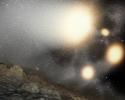
|
-
PIA09956:
-
Fantastic Four Galaxies with Planet (Artist Concept)
Full Resolution:
TIFF
(21.6 MB)
JPEG
(941.8 kB)
|

|
2007-08-06 |
CL0958+4702
|
Spitzer Space Telescope
|
IRAC
|
690x690x3 |
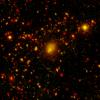
|
-
PIA09955:
-
Fearsome Foursome
Full Resolution:
TIFF
(1.43 MB)
JPEG
(64.28 kB)
|

|
2007-07-24 |
|
Spitzer Space Telescope
|
|
3000x2400x3 |
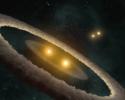
|
-
PIA09939:
-
Evidence for Strange Stellar Family (Artist Concept)
Full Resolution:
TIFF
(21.6 MB)
JPEG
(256.6 kB)
|

|
2007-07-11 |
HD 189733b
|
Spitzer Space Telescope
|
Infrared Spectrograph (IRS)
|
3000x2136x3 |
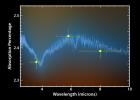
|
-
PIA09715:
-
Exoplanet Forecast: Hot and Wet
Full Resolution:
TIFF
(19.22 MB)
JPEG
(259.2 kB)
|

|
2007-06-20 |
NGC 362
|
Galaxy Evolution Explorer (GALEX)
|
Far-ultraviolet Detector
Near-ultraviolet Detector
|
2250x2550x3 |

|
-
PIA09653:
-
Galaxy Evolution Explorer Spies Band of Stars
Full Resolution:
TIFF
(17.23 MB)
JPEG
(705.7 kB)
|

|
2007-06-13 |
N132D
|
Spitzer Space Telescope
|
Chandra X-ray Telescope
Infrared Array Camera (IRAC)
Multiband Imaging Photometer (MIPS)
|
1806x1200x3 |
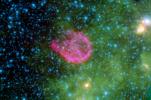
|
-
PIA09604:
-
A Supernova's Shockwaves
Full Resolution:
TIFF
(6.511 MB)
JPEG
(206.6 kB)
|

|
2007-06-01 |
Messier 81
|
Galaxy Evolution Explorer (GALEX)
Hubble Space Telescope
Spitzer Space Telescope
|
GALEX Telescope
Infrared Array Camera (IRAC)
Visible Light
|
3180x2456x3 |
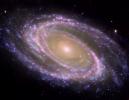
|
-
PIA09579:
-
M81 Galaxy is Pretty in Pink
Full Resolution:
TIFF
(23.43 MB)
JPEG
(1.061 MB)
|

|
2007-05-29 |
|
Spitzer Space Telescope
|
IRAC
|
4097x3557x3 |
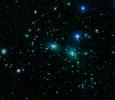
|
-
PIA09561:
-
Dwarfs in Coma Cluster
Full Resolution:
TIFF
(43.72 MB)
JPEG
(1.199 MB)
|

|
2007-05-17 |
Barnard 30
|
Spitzer Space Telescope
|
IRAC
|
3086x1711x3 |
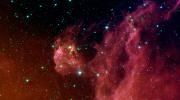
|
-
PIA09412:
-
Young Stars Emerge from Orion's Head
Full Resolution:
TIFF
(15.84 MB)
JPEG
(627.4 kB)
|

|
2007-05-17 |
Barnard 30
|
Spitzer Space Telescope
|
IRAC
Multiband Imaging Photometer (MIPS)
|
3182x1282x3 |
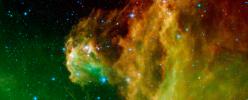
|
-
PIA09411:
-
Young Stars Emerge from Orion's Head
Full Resolution:
TIFF
(12.24 MB)
JPEG
(490.4 kB)
|

|
2007-05-09 |
HD 149026b
|
Spitzer Space Telescope
|
|
638x479x3 |
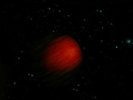
|
-
PIA09378:
-
Blacker than Black (Artist's Concept)

Full Resolution:
TIFF
(918 kB)
JPEG
(12.32 kB)
|

|
2007-05-09 |
HD 189733b
|
Spitzer Space Telescope
|
IRAC
|
640x467x3 |
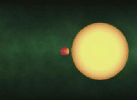
|
-
PIA09377:
-
How to Map a Very Faraway Planet (animation)

Full Resolution:
TIFF
(897.8 kB)
JPEG
(11.68 kB)
|

|
2007-05-09 |
HD 189733b
|
Spitzer Space Telescope
|
IRAC
|
640x473x3 |
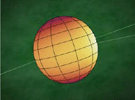
|
-
PIA09376:
-
First Map of Alien World (animation)

Full Resolution:
TIFF
(909.3 kB)
JPEG
(23.38 kB)
|

|
2007-05-01 |
|
Spitzer Space Telescope
|
IRAC
Visible Light
|
2838x948x3 |
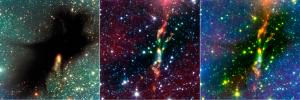
|
-
PIA09338:
-
Spitzer Digs Up Hidden Stars
Full Resolution:
TIFF
(8.071 MB)
JPEG
(398.7 kB)
|

|
2007-05-01 |
|
Galaxy Evolution Explorer (GALEX)
|
GALEX Telescope
|
2250x2550x3 |

|
-
PIA09337:
-
Galaxy Mission Completes Four Star-Studded Years in Space
Full Resolution:
TIFF
(17.23 MB)
JPEG
(590.3 kB)
|

|
2007-04-27 |
Sol (our sun)
|
Solar TErrestrial RElations Observatory (STEREO)
|
SECCHI/Extreme Ultraviolet Imaging Telescope
|
1920x1080x3 |
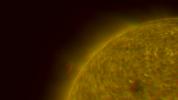
|
-
PIA09333:
-
Left Limb of North Pole of the Sun, March 20, 2007 (Anaglyph)
Full Resolution:
TIFF
(6.23 MB)
JPEG
(89.44 kB)
|

|
2007-04-27 |
Sol (our sun)
|
Solar TErrestrial RElations Observatory (STEREO)
|
SECCHI/Extreme Ultraviolet Imaging Telescope
|
1920x1080x3 |
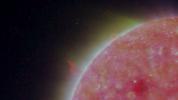
|
-
PIA09332:
-
Left Limb of North Pole of the Sun, March 20, 2007
Full Resolution:
TIFF
(6.23 MB)
JPEG
(84.33 kB)
|

|
2007-04-27 |
Sol (our sun)
|
Solar TErrestrial RElations Observatory (STEREO)
|
SECCHI/Extreme Ultraviolet Imaging Telescope
|
1920x1080x3 |

|
-
PIA09331:
-
South Pole of the Sun, March 20, 2007 (Anaglyph)
Full Resolution:
TIFF
(6.23 MB)
JPEG
(114.9 kB)
|

|
2007-04-27 |
Sol (our sun)
|
Solar TErrestrial RElations Observatory (STEREO)
|
SECCHI/Extreme Ultraviolet Imaging Telescope
|
1920x1080x3 |
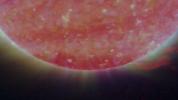
|
-
PIA09330:
-
South Pole of the Sun, March 20, 2007
Full Resolution:
TIFF
(6.23 MB)
JPEG
(94.62 kB)
|

|
2007-04-27 |
Sol (our sun)
|
Solar TErrestrial RElations Observatory (STEREO)
|
SECCHI/Extreme Ultraviolet Imaging Telescope
|
1920x1080x3 |
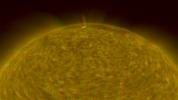
|
-
PIA09329:
-
North Pole of the Sun, March 20, 2007 (Anaglyph)
Full Resolution:
TIFF
(6.23 MB)
JPEG
(126.2 kB)
|

|
2007-04-27 |
Sol (our sun)
|
Solar TErrestrial RElations Observatory (STEREO)
|
SECCHI/Extreme Ultraviolet Imaging Telescope
|
1920x1080x3 |
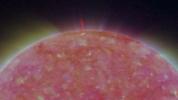
|
-
PIA09328:
-
North Pole of the Sun, March 20, 2007
Full Resolution:
TIFF
(6.23 MB)
JPEG
(94.86 kB)
|

|
2007-04-27 |
Sol (our sun)
|
Solar TErrestrial RElations Observatory (STEREO)
|
SECCHI/Extreme Ultraviolet Imaging Telescope
|
1920x1080x3 |
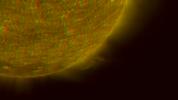
|
-
PIA09327:
-
Right Limb of the South Pole of the Sun, March 18, 2007 (Anaglyph)
Full Resolution:
TIFF
(6.23 MB)
JPEG
(99.1 kB)
|

|
2007-04-27 |
Sol (our sun)
|
Solar TErrestrial RElations Observatory (STEREO)
|
SECCHI/Extreme Ultraviolet Imaging Telescope
|
1920x1080x3 |

|
-
PIA09326:
-
Right Limb of the South Pole of the Sun, March 18, 2007
Full Resolution:
TIFF
(6.23 MB)
JPEG
(85.81 kB)
|

|
2007-04-27 |
Sol (our sun)
|
Solar TErrestrial RElations Observatory (STEREO)
|
SECCHI/Extreme Ultraviolet Imaging Telescope
|
1920x1080x3 |

|
-
PIA09325:
-
Closer View of the Equatorial Region of the Sun, March 24, 2007 (Anaglyph)
Full Resolution:
TIFF
(6.23 MB)
JPEG
(169.6 kB)
|

|
2007-04-27 |
Sol (our sun)
|
Solar TErrestrial RElations Observatory (STEREO)
|
SECCHI/Extreme Ultraviolet Imaging Telescope
|
1920x1080x3 |
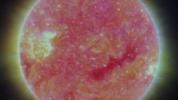
|
-
PIA09324:
-
Closer View of the Equatorial Region of the Sun, March 24, 2007
Full Resolution:
TIFF
(6.23 MB)
JPEG
(129.6 kB)
|

|
2007-04-27 |
Sol (our sun)
|
Solar TErrestrial RElations Observatory (STEREO)
|
SECCHI/Extreme Ultraviolet Imaging Telescope
|
1920x1080x3 |
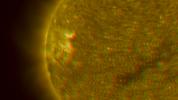
|
-
PIA09323:
-
Close-up View of an Active Region of the Sun, March 23, 2007 (Anaglyph)
Full Resolution:
TIFF
(6.23 MB)
JPEG
(145.6 kB)
|

|
2007-04-27 |
Sol (our sun)
|
Solar TErrestrial RElations Observatory (STEREO)
|
SECCHI/Extreme Ultraviolet Imaging Telescope
|
1920x1080x3 |
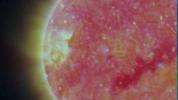
|
-
PIA09322:
-
Close-up View of an Active Region of the Sun, March 23, 2007
Full Resolution:
TIFF
(6.23 MB)
JPEG
(116 kB)
|

|
2007-04-27 |
Sol (our sun)
|
Solar TErrestrial RElations Observatory (STEREO)
|
SECCHI/Extreme Ultraviolet Imaging Telescope
|
1920x1080x3 |
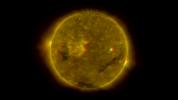
|
-
PIA09321:
-
Full Disk Image of the Sun, March 26, 2007 (Anaglyph)
Full Resolution:
TIFF
(6.23 MB)
JPEG
(91.3 kB)
|

|
2007-04-27 |
Sol (our sun)
|
Solar TErrestrial RElations Observatory (STEREO)
|
SECCHI/Extreme Ultraviolet Imaging Telescope
|
1920x1080x3 |
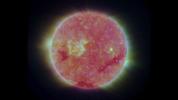
|
-
PIA09320:
-
Full Disk Image of the Sun, March 26, 2007
Full Resolution:
TIFF
(6.23 MB)
JPEG
(110.4 kB)
|

|
2007-04-18 |
Rosette Nebula
|
Spitzer Space Telescope
|
IRAC
|
639x479x3 |

|
-
PIA09268:
-
Infrared Rose

Full Resolution:
TIFF
(919.4 kB)
JPEG
(54.85 kB)
|

|
2007-04-18 |
Rosette Nebula
|
Spitzer Space Telescope
|
IRAC
|
1669x1439x3 |
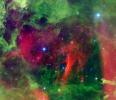
|
-
PIA09267:
-
Every Rose has a Thorn
Full Resolution:
TIFF
(7.217 MB)
JPEG
(286.2 kB)
|

|
2007-04-18 |
Rosette Nebula
|
Spitzer Space Telescope
|
|
3300x2400x3 |

|
-
PIA09266:
-
Highway to the Danger Zone (Artist Concept)

Full Resolution:
TIFF
(23.76 MB)
JPEG
(244.6 kB)
|

|
2007-04-16 |
Pleiades
|
Spitzer Space Telescope
|
IRAC
Multiband Imaging Photometer (MIPS)
|
2855x2855x3 |
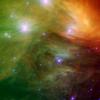
|
-
PIA09263:
-
The Seven Sisters Pose for Spitzer
Full Resolution:
TIFF
(24.45 MB)
JPEG
(779.5 kB)
|

|
2007-04-16 |
Pleiades
|
Spitzer Space Telescope
|
IRAC
|
2855x2855x3 |
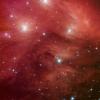
|
-
PIA09262:
-
Pink Pleiades
Full Resolution:
TIFF
(24.45 MB)
JPEG
(980.3 kB)
|

|
2007-03-29 |
|
Spitzer Space Telescope
|
|
3000x2400x3 |

|
-
PIA09229:
-
Two Suns Raise Family of Planetary Bodies (Artist Animation)

Full Resolution:
TIFF
(21.6 MB)
JPEG
(309.2 kB)
|

|
2007-03-29 |
|
Spitzer Space Telescope
|
|
3000x2000x3 |
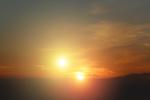
|
-
PIA09228:
-
Alien Sunset (Artist Concept)
Full Resolution:
TIFF
(18 MB)
JPEG
(239.4 kB)
|

|
2007-03-29 |
|
Spitzer Space Telescope
|
IRAC
|
3000x2400x3 |
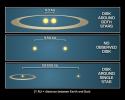
|
-
PIA09227:
-
Where Planets Take up Residence
Full Resolution:
TIFF
(21.6 MB)
JPEG
(348.8 kB)
|

|
2007-03-07 |
Z Camelopardalis
|
Galaxy Evolution Explorer (GALEX)
|
|
720x487x3 |
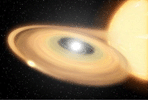
|
-
PIA09221:
-
Explosions - Large and Small (Artist Concept)

Full Resolution:
TIFF
(1.053 MB)
JPEG
(34.97 kB)
|

|
2007-03-07 |
Z Camelopardalis
|
Galaxy Evolution Explorer (GALEX)
|
Far-ultraviolet Detector
Near-ultraviolet Detector
|
1800x1800x3 |

|
-
PIA09220:
-
Scene of Multiple Explosions

Full Resolution:
TIFF
(9.735 MB)
JPEG
(851.7 kB)
|

|
2007-03-07 |
Z Camelopardalis
|
Galaxy Evolution Explorer (GALEX)
|
Far-ultraviolet Detector
|
1800x1800x3 |
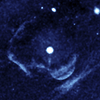
|
-
PIA09219:
-
Ghostly Remnant of an Explosive Past

Full Resolution:
TIFF
(9.735 MB)
JPEG
(153.7 kB)
|

|
2007-02-21 |
|
Spitzer Space Telescope
|
|
3000x2400x3 |
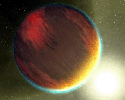
|
-
PIA09200:
-
Exotic Atmospheres
(Artist Concept)

Full Resolution:
TIFF
(21.6 MB)
JPEG
(257.1 kB)
|

|
2007-02-21 |
|
Spitzer Space Telescope
|
Infrared Spectrograph (IRS)
|
3000x2400x3 |
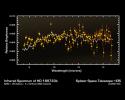
|
-
PIA09199:
-
Cracking the Code of Faraway Worlds
Full Resolution:
TIFF
(21.6 MB)
JPEG
(354 kB)
|

|
2007-02-21 |
|
Spitzer Space Telescope
|
Infrared Spectrograph (IRS)
|
3000x2400x3 |
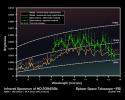
|
-
PIA09198:
-
Cracking the Code of Faraway Worlds
Full Resolution:
TIFF
(21.6 MB)
JPEG
(484.3 kB)
|

|
2007-02-21 |
|
Spitzer Space Telescope
|
Infrared Spectrograph (IRS)
|
3000x2400x3 |
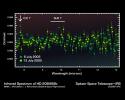
|
-
PIA09197:
-
Cracking the Code of Faraway Worlds
Full Resolution:
TIFF
(21.6 MB)
JPEG
(399.2 kB)
|

|
2007-02-21 |
|
Spitzer Space Telescope
|
|
3000x2400x3 |
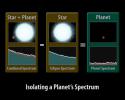
|
-
PIA09196:
-
How to Pluck a Spectrum from a Planet
Full Resolution:
TIFF
(21.6 MB)
JPEG
(298.3 kB)
|

|
2007-02-13 |
|
Hubble Space Telescope
|
WFPC2
|
1241x1207x3 |
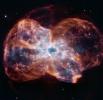
|
-
PIA09194:
-
The Colorful Demise of a Sun-like Star
Full Resolution:
TIFF
(4.499 MB)
JPEG
(153.6 kB)
|

|
2007-02-12 |
Helix Nebula
|
Spitzer Space Telescope
|
IRAC
Multiband Imaging Photometer (MIPS)
|
4279x3559x3 |
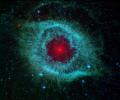
|
-
PIA09178:
-
Comets Kick up Dust in Helix Nebula
Full Resolution:
TIFF
(45.69 MB)
JPEG
(1.944 MB)
|

|
2007-01-26 |
|
Spitzer Space Telescope
|
IRAC
|
720x720x3 |
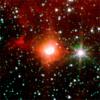
|
-
PIA09119:
-
Luminous Blue Variable: Destined To Be a Supernova?
Full Resolution:
TIFF
(1.557 MB)
JPEG
(53.65 kB)
|

|
2007-01-26 |
|
Spitzer Space Telescope
|
|
3200x2400x3 |

|
-
PIA09118:
-
Forecasting Weather on Distant Worlds (Artist Concept)
Full Resolution:
TIFF
(23.04 MB)
JPEG
(277.9 kB)
|

|
2007-01-26 |
|
Spitzer Space Telescope
|
|
3000x2400x3 |
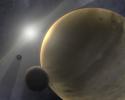
|
-
PIA09117:
-
Gas Giants Form Quickly (Artist Concept)
Full Resolution:
TIFF
(21.6 MB)
JPEG
(205.5 kB)
|

|
2007-01-16 |
|
Galaxy Evolution Explorer (GALEX)
Spitzer Space Telescope
|
IRAC
|
975x700x3 |
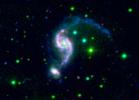
|
-
PIA09106:
-
Older Galaxy Pair Has Surprisingly Youthful Glow
Full Resolution:
TIFF
(2.051 MB)
JPEG
(55.51 kB)
|

|
2007-01-09 |
|
Hubble Space Telescope
Spitzer Space Telescope
|
IRAC
Multiband Imaging Photometer (MIPS)
|
2394x2571x3 |

|
-
PIA09109:
-
Unwrapping the Pillars
Full Resolution:
TIFF
(18.49 MB)
JPEG
(578.7 kB)
|

|
2007-01-09 |
|
Spitzer Space Telescope
|
IRAC
Multiband Imaging Photometer (MIPS)
|
2100x2400x3 |

|
-
PIA09108:
-
Eagle Nebula Flaunts its Infrared Feathers
Full Resolution:
TIFF
(15.14 MB)
JPEG
(1.048 MB)
|

|
2007-01-09 |
|
Hubble Space Telescope
Spitzer Space Telescope
|
IRAC
Multiband Imaging Photometer (MIPS)
|
2100x2400x3 |

|
-
PIA09107:
-
Cosmic Epic Unfolds in Infrared
Full Resolution:
TIFF
(15.14 MB)
JPEG
(890.6 kB)
|

|
2006-12-18 |
|
Spitzer Space Telescope
|
IRAC
|
2430x1525x3 |

|
-
PIA09100:
-
The Universe's First Fireworks
Full Resolution:
TIFF
(11.13 MB)
JPEG
(405.3 kB)
|

|
2006-12-18 |
|
Spitzer Space Telescope
|
|
644x481x3 |
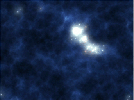
|
-
PIA09099:
-
Stars Spring up Out of the Darkness (Artist Concept)

Full Resolution:
TIFF
(930.5 kB)
JPEG
(22 kB)
|

|
2006-12-08 |
|
Spitzer Space Telescope
|
IRAC
|
3000x2141x3 |
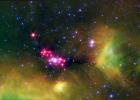
|
-
PIA09072:
-
Seeing Stars in Serpens
Full Resolution:
TIFF
(19.27 MB)
JPEG
(752 kB)
|

|
2006-12-08 |
|
Spitzer Space Telescope
|
IRAC
|
2320x2420x3 |

|
-
PIA09071:
-
Stellar Debris in the Large Magellanic Cloud
Full Resolution:
TIFF
(16.86 MB)
JPEG
(373.3 kB)
|

|
2006-12-08 |
|
Spitzer Space Telescope
|
MIPS
|
2861x1439x3 |
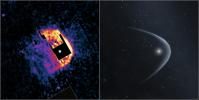
|
-
PIA09070:
-
Red Giant Plunging Through Space
Full Resolution:
TIFF
(12.35 MB)
JPEG
(212.3 kB)
|

|
2006-12-05 |
|
Galaxy Evolution Explorer (GALEX)
|
|
3000x2000x3 |
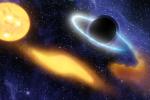
|
-
PIA01884:
-
Black Hole Grabs Starry Snack (Artist Concept)
Full Resolution:
TIFF
(18 MB)
JPEG
(580.6 kB)
|

|
2006-11-07 |
|
Spitzer Space Telescope
|
IRAC
Ultraviolet/Visible Camera
|
6000x6000x3 |
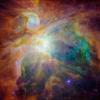
|
-
PIA01322:
-
Chaos at the Heart of Orion
Full Resolution:
TIFF
(108 MB)
JPEG
(1.536 MB)
|

|
2006-10-27 |
|
Spitzer Space Telescope
|
IRAC
Multiband Imaging Photometer (MIPS)
|
2448x2244x3 |

|
-
PIA01320:
-
Dead Star Creates Celestial Havoc
Full Resolution:
TIFF
(16.5 MB)
JPEG
(466.2 kB)
|

|
2006-10-27 |
|
Spitzer Space Telescope
|
IRAC
Multiband Imaging Photometer (MIPS)
|
3000x2300x3 |

|
-
PIA01318:
-
Where Galactic Snakes Live
Full Resolution:
TIFF
(20.7 MB)
JPEG
(1.154 MB)
|

|
2006-10-26 |
Cassiopeia A
|
Spitzer Space Telescope
|
IRAC
|
1600x1600x3 |
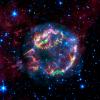
|
-
PIA01903:
-
Lighting up a Dead Star's Layers
Full Resolution:
TIFF
(7.693 MB)
JPEG
(218 kB)
|

|
2006-10-26 |
Cassiopeia A
|
Spitzer Space Telescope
|
IRAC
|
638x477x3 |
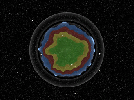
|
-
PIA01902:
-
Order Amidst Chaos of Star's Explosion (Artist Concept)

Full Resolution:
TIFF
(914.2 kB)
JPEG
(56.6 kB)
|

|
2006-10-26 |
Cassiopeia A
|
Spitzer Space Telescope
|
|
2400x3000x3 |

|
-
PIA01901:
-
Once an Onion, Always an Onion (Artist Concept)
Full Resolution:
TIFF
(21.62 MB)
JPEG
(576.9 kB)
|

|
2006-10-12 |
|
Spitzer Space Telescope
|
|
2400x3200x3 |

|
-
PIA01938:
-
Exotic World Blisters Under the Sun (Artist Concept)
Full Resolution:
TIFF
(23.07 MB)
JPEG
(308.3 kB)
|

|
2006-10-12 |
|
Spitzer Space Telescope
|
MIPS
|
2396x2680x3 |

|
-
PIA01937:
-
The Light and Dark Sides of a Distant Planet
Full Resolution:
TIFF
(19.29 MB)
JPEG
(812.9 kB)
|

|
2006-10-12 |
|
Spitzer Space Telescope
|
|
640x479x3 |

|
-
PIA01936:
-
Fire and Ice Planet (Artist Concept)

Full Resolution:
TIFF
(920.9 kB)
JPEG
(22.82 kB)
|

|
2006-10-03 |
|
Spitzer Space Telescope
|
MIPS
|
1500x558x3 |

|
-
PIA01319:
-
A Star's Close Encounter
Full Resolution:
TIFF
(839.7 kB)
JPEG
(43.53 kB)
|

|
2006-09-28 |
|
Galaxy Evolution Explorer (GALEX)
Spitzer Space Telescope
|
MIPS
Ultraviolet/Visible Camera
|
7430x2410x3 |

|
-
PIA08787:
-
Amazing Andromeda Galaxy
Full Resolution:
TIFF
(53.72 MB)
JPEG
(3.426 MB)
|

|
2006-09-06 |
Pleiades
|
Cassini-Huygens
|
ISS - Wide Angle
|
687x559x1 |
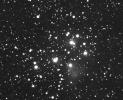
|
-
PIA08260:
-
The Seven Sisters
Full Resolution:
TIFF
(384.7 kB)
JPEG
(63.42 kB)
|

|
2006-09-01 |
|
Spitzer Space Telescope
|
IRAC
Multiband Imaging Photometer (MIPS)
|
6000x6000x3 |
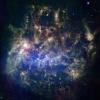
|
-
PIA07137:
-
What's Old is New in the Large Magellanic Cloud
Full Resolution:
TIFF
(108 MB)
JPEG
(8.784 MB)
|

|
2006-09-01 |
|
Spitzer Space Telescope
|
IRAC
|
6000x6000x3 |
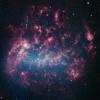
|
-
PIA07136:
-
Our Chaotic Neighbor
Full Resolution:
TIFF
(108 MB)
JPEG
(11.3 MB)
|

|
2006-08-23 |
|
Galaxy Evolution Explorer (GALEX)
|
|
3000x2400x3 |
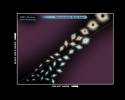
|
-
PIA08697:
-
Big Black Holes Mean Bad News for Stars (diagram)
Full Resolution:
TIFF
(21.6 MB)
JPEG
(494.3 kB)
|

|
2006-08-23 |
|
Galaxy Evolution Explorer (GALEX)
|
|
3000x2400x3 |
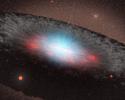
|
-
PIA08696:
-
An Unwelcome Place for New Stars (artist concept)
Full Resolution:
TIFF
(21.6 MB)
JPEG
(1.465 MB)
|

|
2006-08-15 |
Orion
|
Spitzer Space Telescope
|
IRAC
|
3000x1800x3 |
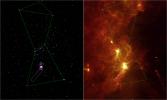
|
-
PIA08656:
-
Infrared Spotlight on Orion's Sword
Full Resolution:
TIFF
(16.2 MB)
JPEG
(328.7 kB)
|

|
2006-08-15 |
Orion
|
Spitzer Space Telescope
|
IRAC
|
19937x6972x3 |
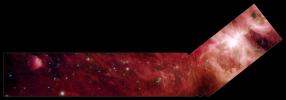
|
-
PIA08655:
-
A Slice of Orion
Full Resolution:
TIFF
(417 MB)
JPEG
(5.782 MB)
|

|
2006-08-15 |
Orion
|
Spitzer Space Telescope
|
IRAC
|
2240x2086x3 |
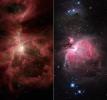
|
-
PIA08654:
-
The Infrared Hunter
Full Resolution:
TIFF
(14.03 MB)
JPEG
(324.9 kB)
|

|
2006-08-15 |
Orion
|
Spitzer Space Telescope
|
IRAC
|
3220x6000x3 |

|
-
PIA08653:
-
The Sword of Orion

Full Resolution:
TIFF
(57.96 MB)
JPEG
(738.3 kB)
|

|
2006-07-28 |
|
Galaxy Evolution Explorer (GALEX)
|
GALEX Telescope
|
2574x858x3 |

|
-
PIA08646:
-
Triple Scoop from Galaxy Hunter
Full Resolution:
TIFF
(6.633 MB)
JPEG
(393.4 kB)
|

|
2006-07-24 |
|
Spitzer Space Telescope
|
|
3200x2400x3 |
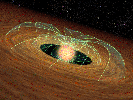
|
-
PIA08626:
-
Stars Can't Spin Out of Control (Artist's Animation)

Full Resolution:
TIFF
(23.04 MB)
JPEG
(714.7 kB)
|

|
2006-07-21 |
|
Hubble Space Telescope
Spitzer Space Telescope
|
IRAC
Visible Light
|
900x360x3 |
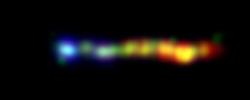
|
-
PIA08617:
-
Black Hole Spills Kaleidoscope of Color
Full Resolution:
TIFF
(973.2 kB)
JPEG
(10.56 kB)
|

|
2006-06-09 |
|
Spitzer Space Telescope
|
IRAC
|
2325x2329x3 |

|
-
PIA08533:
-
Supernova Dust Factory in M74
Full Resolution:
TIFF
(16.26 MB)
JPEG
(325.5 kB)
|

|
2006-06-06 |
|
Hubble Space Telescope
Spitzer Space Telescope
|
IRAC
Multiband Imaging Photometer (MIPS)
|
1778x1778x3 |
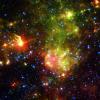
|
-
PIA08516:
-
Dusty Death of a Massive Star
Full Resolution:
TIFF
(9.498 MB)
JPEG
(553.1 kB)
|

|
2006-06-05 |
|
Spitzer Space Telescope
|
IRAC
Mosaic-I Camera
Mayall 4-Meter Telescope
|
1114x1380x3 |

|
-
PIA08509:
-
Galaxies Gather at Great Distances
Full Resolution:
TIFF
(4.618 MB)
JPEG
(365.3 kB)
|

|
2006-06-05 |
Messier 31
|
Spitzer Space Telescope
|
IRAC
|
720x486x3 |
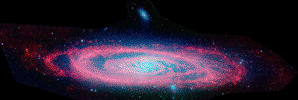
|
-
PIA08506:
-
Fade to Red

Full Resolution:
TIFF
(219.5 MB)
JPEG
(10.51 MB)
|

|
2006-05-11 |
|
Spitzer Space Telescope
|
IRAC
MIPS
Visible Light
|
900x859x3 |
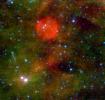
|
-
PIA08453:
-
The (Almost) Invisible Aftermath of a Massive Star's Death
Full Resolution:
TIFF
(2.322 MB)
JPEG
(104 kB)
|

|
2006-04-26 |
|
Spitzer Space Telescope
|
IRAC
|
1010x1010x3 |
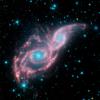
|
-
PIA08098:
-
Ready for the Cosmic Ball
Full Resolution:
TIFF
(3.065 MB)
JPEG
(65.47 kB)
|

|
2006-04-26 |
|
Hubble Space Telescope
Spitzer Space Telescope
|
IRAC
Visible Light
|
2905x1486x3 |
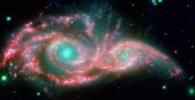
|
-
PIA08097:
-
Eyes in the Sky
Full Resolution:
TIFF
(12.95 MB)
JPEG
(560.3 kB)
|

|
2006-04-24 |
M82 Galaxy
|
Hubble Space Telescope
Spitzer Space Telescope
|
Chandra X-ray Telescope
Infrared Array Camera (IRAC)
Visible Light
|
640x480x3 |
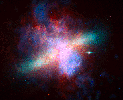
|
-
PIA08093:
-
Great Observatories Present Rainbow of a Galaxy

Full Resolution:
TIFF
(45.01 MB)
JPEG
(799.8 kB)
|

|
2006-04-05 |
|
Spitzer Space Telescope
|
|
3000x2400x3 |
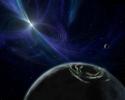
|
-
PIA08042:
-
Extreme Planets (Artist Concept)
Full Resolution:
TIFF
(21.6 MB)
JPEG
(351.9 kB)
|

|
2006-04-05 |
|
Spitzer Space Telescope
W. M. Keck Observatory
|
IRAC
Keck I Telescope
|
2571x2130x3 |
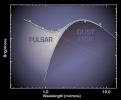
|
-
PIA08041:
-
Circle of Ashes
Full Resolution:
TIFF
(16.45 MB)
JPEG
(212.9 kB)
|

|
2006-04-05 |
|
Spitzer Space Telescope
|
|
3200x2400x3 |

|
-
PIA08040:
-
Stellar Rubble May be Planetary Building Blocks (Artist Concept)

Full Resolution:
TIFF
(23.04 MB)
JPEG
(721.1 kB)
|

|
2006-03-21 |
|
Spitzer Space Telescope
|
IRAC
|
2243x2240x3 |
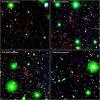
|
-
PIA02038:
-
Great Galactic Buddies
Full Resolution:
TIFF
(15.09 MB)
JPEG
(698.3 kB)
|

|
2006-03-16 |
|
Spitzer Space Telescope
|
IRAC
|
480x640x3 |
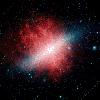
|
-
PIA02917:
-
Smokin' Hot Galaxy (animation)

Full Resolution:
TIFF
(6.619 MB)
JPEG
(163.8 kB)
|

|
2006-03-03 |
|
Spitzer Space Telescope
|
IRAC
Near Infrared Spectrometer
|
966x966x3 |
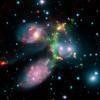
|
-
PIA02587:
-
A Shocking Surprise in Stephan's Quintet
Full Resolution:
TIFF
(2.804 MB)
JPEG
(87.19 kB)
|

|
2006-02-15 |
|
Spitzer Space Telescope
|
Infrared Spectrograph (IRS)
|
3000x2400x3 |
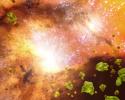
|
-
PIA02180:
-
Galactic Hearts of Glass (Artist Concept)
Full Resolution:
TIFF
(21.6 MB)
JPEG
(875.8 kB)
|

|
2006-02-15 |
|
Spitzer Space Telescope
|
IRAC
|
706x869x3 |

|
-
PIA08007:
-
Galaxy NGC 4579
Full Resolution:
TIFF
(1.843 MB)
JPEG
(35.48 kB)
|

|
2006-02-15 |
Sol (our sun)
|
SOHO
|
|
2448x2448x3 |
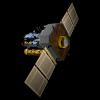
|
-
PIA18170:
-
SOHO Spacecraft (Artist's Concept)
Full Resolution:
TIFF
(17.98 MB)
JPEG
(266.8 kB)
|